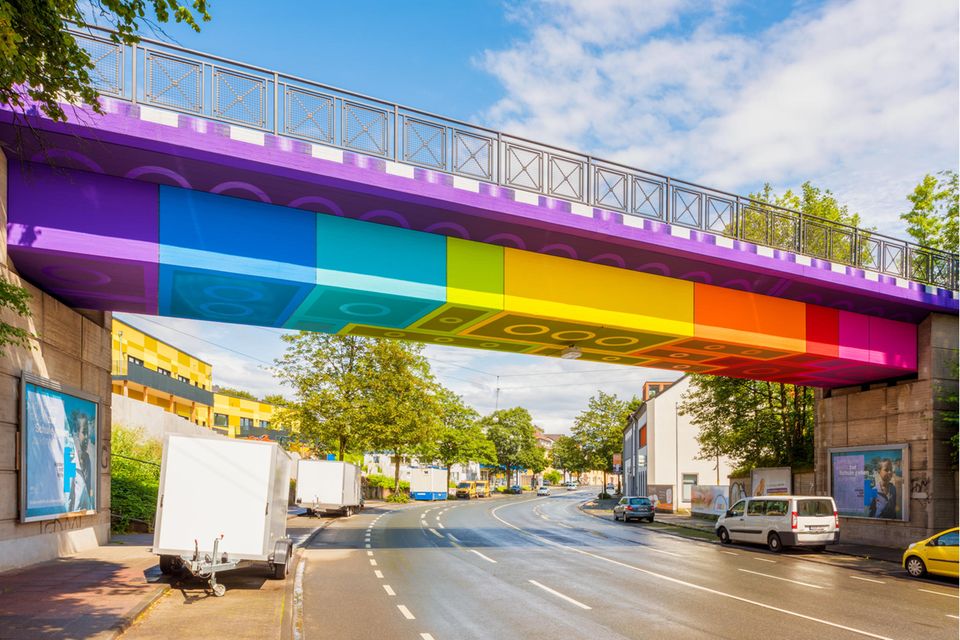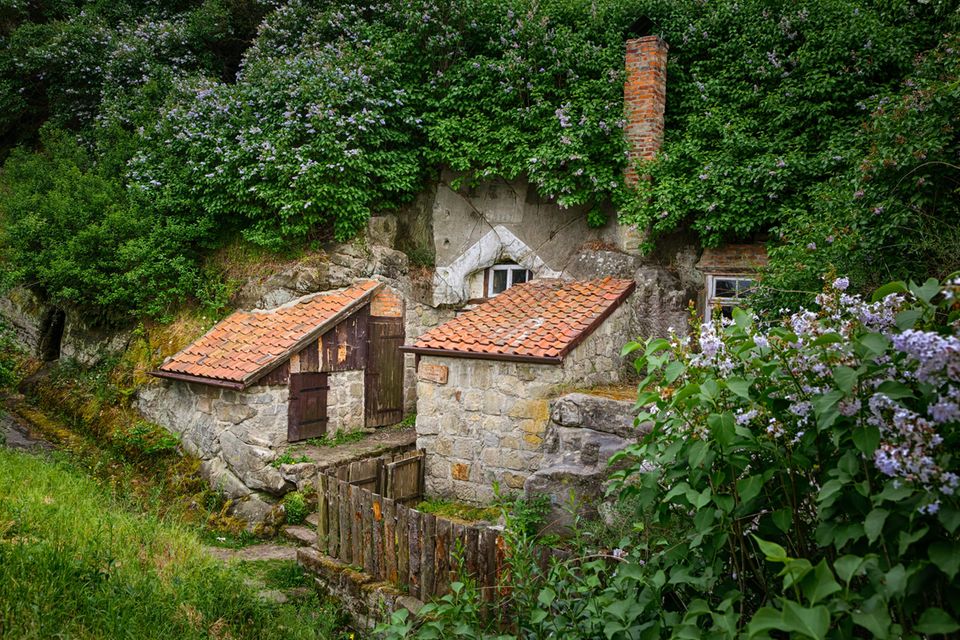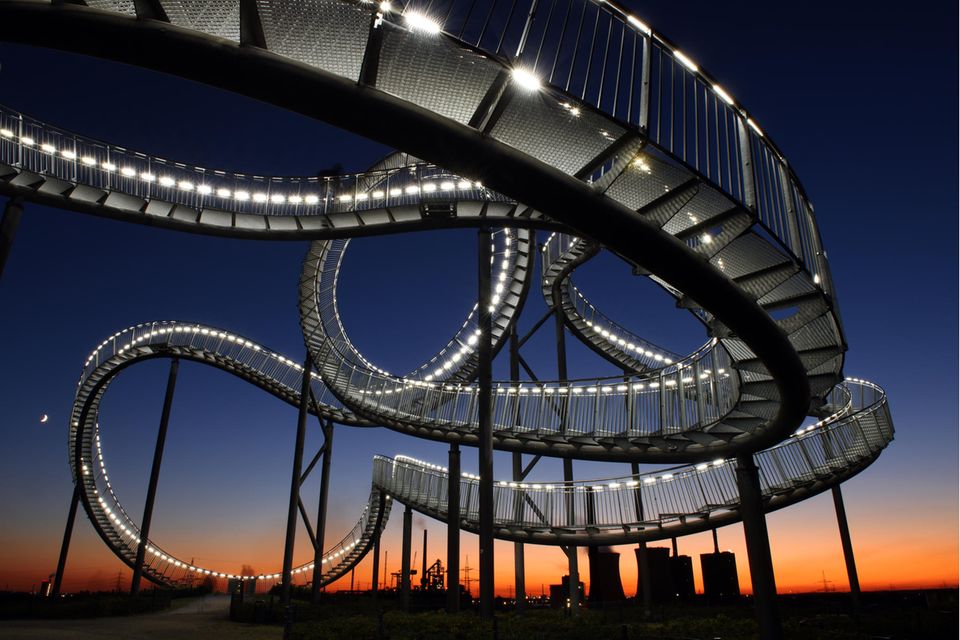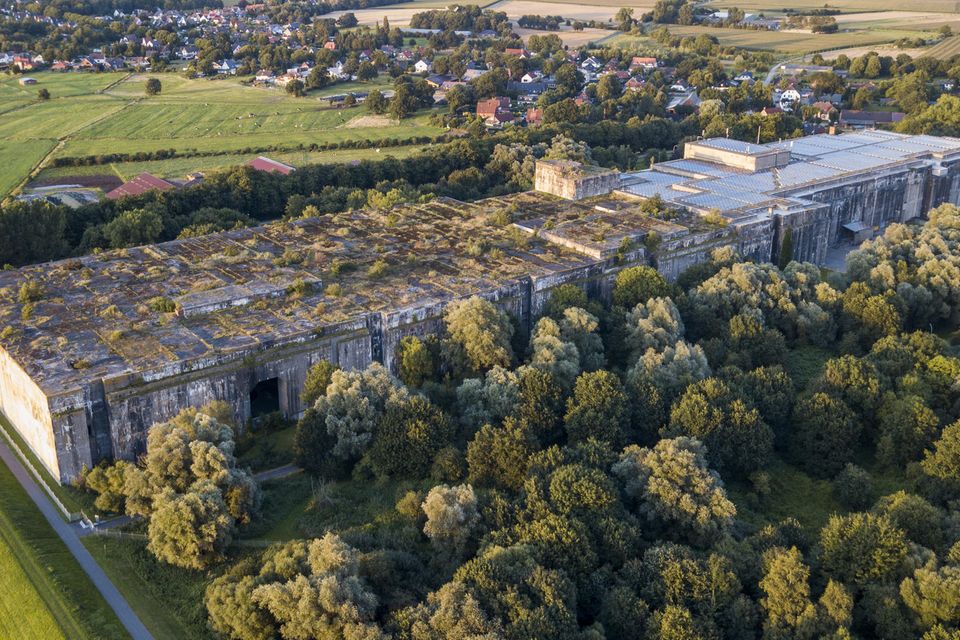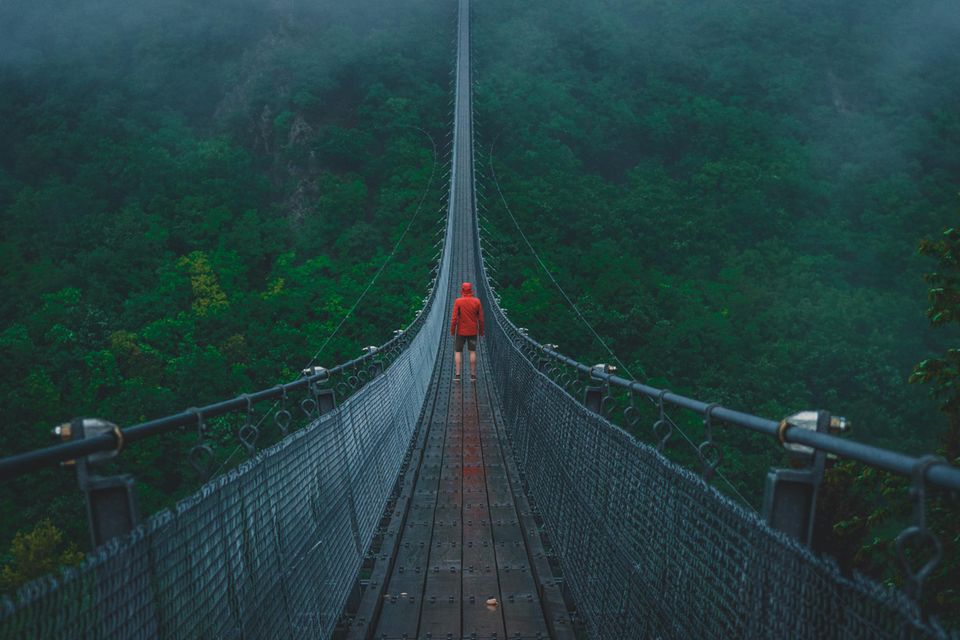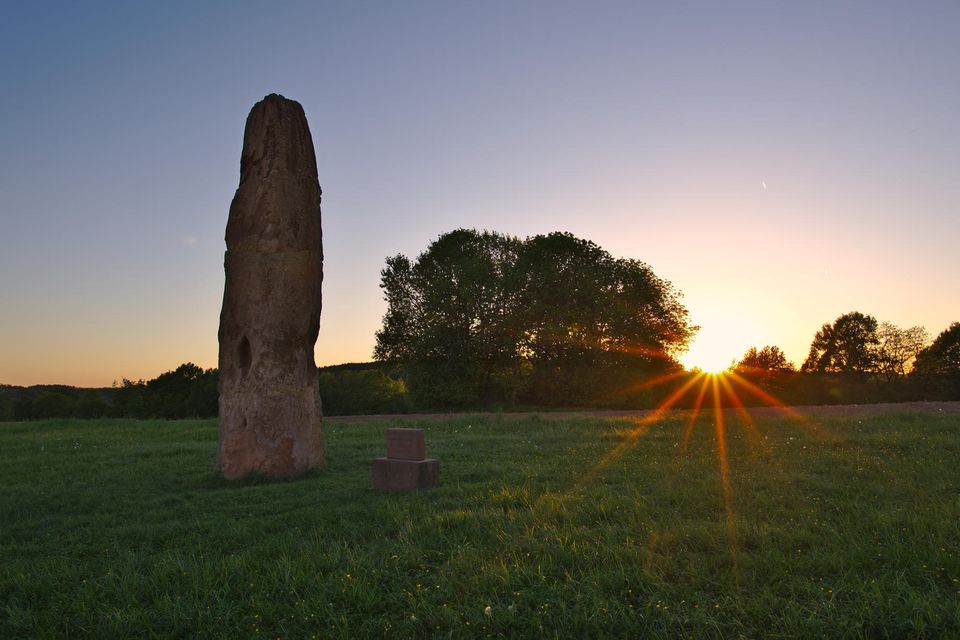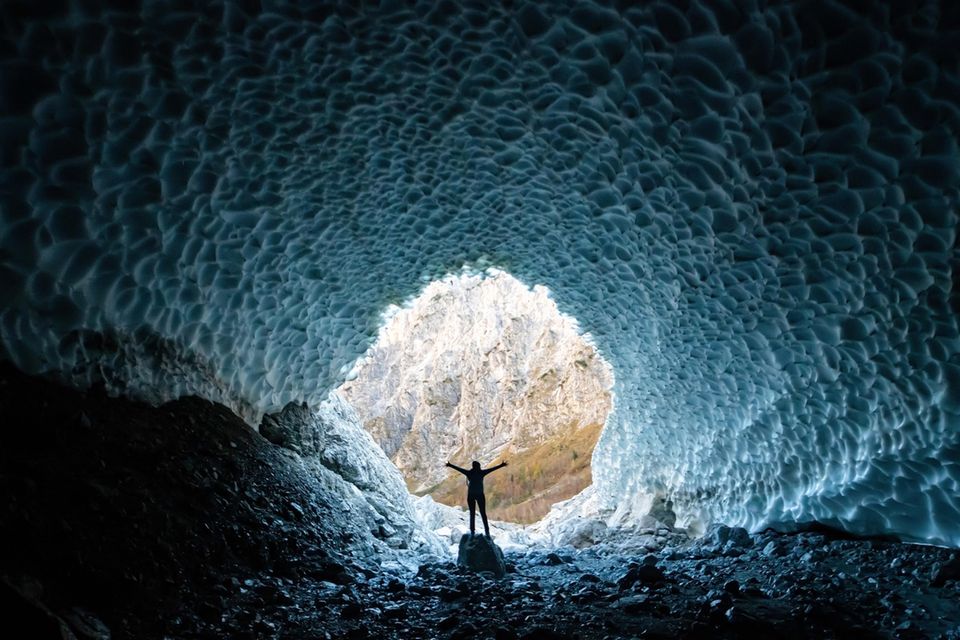A bridge made of Lego, an upside down house or cave dwellings like the Hobbits? These are just three of the craziest travel destinations in Germany that your kids are sure to enjoy.
Keeping children happy isn’t always easy, especially when you travel, when many things are unfamiliar, you stay in the car for a long time or you miss your new best friend very much. Luckily, when traveling in or through Germany, there are always fun and spectacular places that are sure to lift the mood in the backseat. And if there is still ice cream, there will definitely be a blasting contest. We show eight ideas from the fantastic book “Germany’s craziest travel guide”, none of which we had thought of before, but which are definitely worth a look.
1. Lego Bridge in Wuppertal © Allard One / Shutterstock
We’ve probably all built a bridge with Lego bricks at one time or another. In Wuppertal, however, they went further and built a real bridge out of Lego bricks. At least that’s how it seems looking at the bridge over the twin road from afar. If you get closer, you can see that you have become a victim of a deceptively real illusion. The stones of the bridge are painted only. Brilliant! Street artist Martin Heuwold’s idea was received so well that a second Lego bridge has since been built in Wuppertal.
Address: Sister Street 5, 42285 Wuppertal-Elberfeld
2. Cave houses in the Harz © Photo agency Zoonar GmbH / Shutterstock
Fantasy experts know: if you want to see the Hobbit’s caves, you need to go to New Zealand, where the Lord of the Rings saga was filmed and filming locations have become popular destinations. If you want to save yourself the long flight and still want to feel like a hobbit, you should go to Langenstein in the Harz mountains. There are twelve cave dwellings carved into the stone by poor farmers in the 17th and 18th centuries. The apartments have an area of about 30 m2 each and consist of several rooms, the walls between the rooms are made of natural rock. The construction of such a cave dwelling took up to five months. Sheep and goats were kept on the “roofs” of the rock dwellings to prevent trees from growing here and the roots breaking the sandstone and destroying the houses. Subsequently, the cave dwellings were even expanded with small additions. However they were not used as dwellings again from the early 19th century.
Address: Schäferberg 23, 38895 Langenstein
3. “Tiger and Turtle Magic Mountain” in Duisburg ©heikoneumannphotography/Shutterstock
Roller coaster that you ride on instead of racing on a trolley? Where is there something like this? In Duisburg! More precisely on the Heinrich-Hildebrand-Höhe in the Angerpark. The sculpture, 40 x 41 meters wide and 14 meters high, has been located here since 2011. Its full name is “Tiger & Turtle – Magic Mountain”. You really feel magical here. It’s a pity that you can’t try the loop ride too… Especially at night, when the roller coaster is beautifully illuminated, it creates a special atmosphere.
Address: Ehinger Strasse 117, 47249 Duisburg
4. Upside down house in Usedom © DR Photos / Shutterstock / Shutterstock
In this house in Trassenheide on the island of Usedom, the world is literally upside down. You enter through the roof, you walk along the ceiling, and to see the floor you have to look up into the upside down house. There, the slippers “lie” next to a bed. The first few minutes feel weird, because you’re constantly afraid that things might turn you upside down or fall on your head. One or the other might even feel dizzy for a moment. But once you get used to the unusual perspective that the house offers, you can take beautiful snapshots that even Spider-Man would be jealous of. The fallen house in Usedom was the first of its kind in Germany.
Address: Wiesenweg 2c, 17449 Trassenheide, Usedom
5. “Valentin” submarine bunker in Bremen © IURII BURIAK / Shutterstock
The submarine bunker Valentin is one of the biggest wounds that the Second World War inflicted on Bremen. Thousands of forced laborers lost their lives during the construction of the gigantic halls. Here, the submarines with which the German military wanted to change the situation in the so-called submarine warfare were to be built every 56 hours. But that didn’t happen again. In the spring of 1945, several bombing raids ensured that the 95% completed construction work on the building was completed. Like many other Nazi-era structural remains, the Valentin submarine bunker is also a sign of Nazi megalomania. With an area of over 35,000 square meters, the bunker is still the largest free-standing bunker in Germany. Both from the outside and the inside the building with its enormous size literally overwhelms you. Part of the bunker has now been transformed into a place of (commemoration) and can be visited. It’s best to take a jacket with you on a tour, even in summer. The meter-thick and largely windowless walls ensure that the temperature inside the bunker does not rise above twelve degrees all year round.
Address: Rekumer Siel, 28777 Bremen
6. “Geierlay” suspension bridge over the Hunsrück ©Jurian Cuypers/Shutterstock
Be careful, the situation can become volatile. With a length of 360 metres, the Geierlay Suspension Bridge is one of the longest suspension bridges in Germany. It is only surpassed by the Titan RT in the Harz Mountains. At the highest point it is at least 100 meters deep. The fact that the original Nepalese feeling arises here also has something to do with the special construction, which is based on Asian bridges. A maximum of 950 people could be on deck at the same time. Assuming they weigh an average of 80 kilograms. The bridge itself weighs 62 tons.
Address: 56290 Mörsdorf Coordinates: 50°5’24”N, 7°20’28”E
7. The Gollenstein in the Saarland © Matthias Blum/Shutterstock
For 5000 years the Gollenstein has stood on a small hill in Blieskastel. It is a so-called menhir, that is, one of those menhirs that the comic Gaul Obelix loves to play with. It was built by Stone Age people, who probably held a Stone Age cult at its feet. If you look closely, today you can see that the stone, which is just over six meters high, has been broken into four parts. Here’s how it happened: After the stone had sat undisturbed in the area for thousands of years, the Nazis arrived. Fearing that the clearly visible landmark would make it easier for enemy armies to orientate, they wanted to lay the stone. The soldiers tried to protect Gollenstein with straw padding. But they didn’t do particularly well. The stone shattered. After the war the individual parts were reassembled with concrete. The niche with the cross in the stone was probably carved in the early eighteenth century.
Address: 66440 Blieskastel Coordinates: 49°14’40.54″N, 7°14’58.44″E
8. The Ice Chapel in Berchtesgaden © ON-Photography Germany / Shutterstock
The Königssee in Berchtesgaden gives the feeling of a fjord. On the shores of the lake rise rock faces more than 2000 meters high, especially the massive east face of the Watzmann. At the foot of this face is also the destination of this stage: the Eiskapelle, an ice cave which is part of the lowest ice field in the German Alps. To reach it you must first take the boat to St. Bartholomä. From there a path leads to the east face of the Watzmann. Once you reach the “Signposted trail ends here” sign, you still have to walk a good quarter of an hour along an unmarked trail that becomes more and more alpine in the direction of the Eiskapelle. The best time to visit the Ice Chapel is July and August. In the winter months there is a risk of avalanches. Furthermore, avalanches and snow could block the entrance to the chapel. Normally the entrance does not reopen until spring. In the ice chapel, the danger of collapse is constant. Caution is required when entering. Under no circumstances should you venture alone or too deep into the cave. Inside, however, you’ll be rewarded with grand views and insights.
Address: 83471 Schönau am Königssee, coordinates: 47°32’36.77″N, 12°56’6.72″E
All tips come from the book “Germany’s craziest travel guide: Hidden places, curious buildings and mysterious regions” by Daniel Wiechmann (Riva Verlag, 15 euros).

